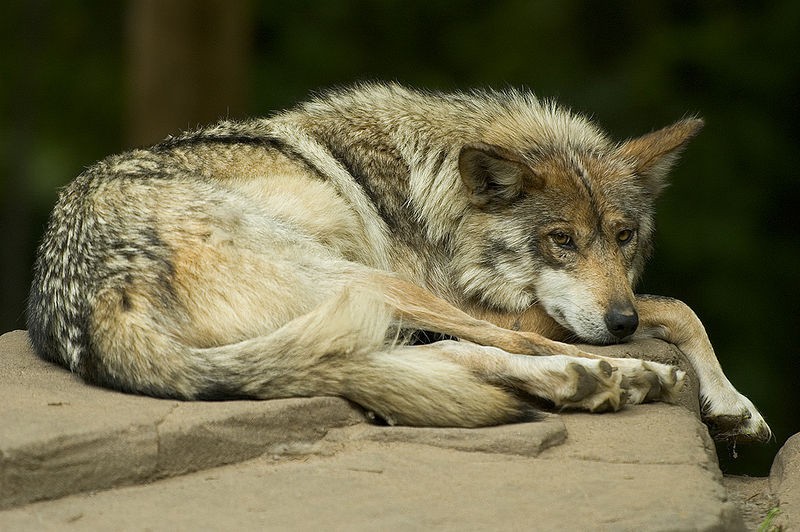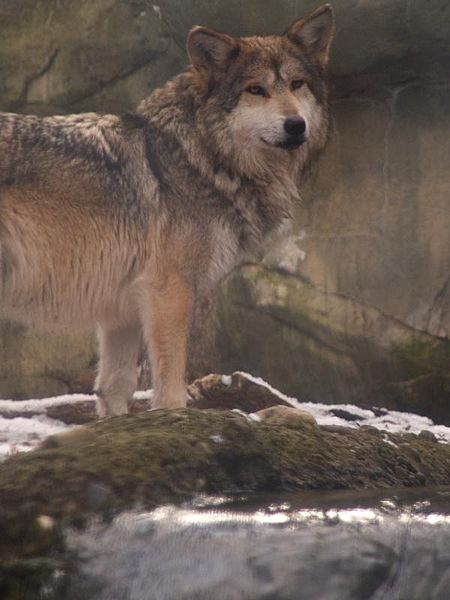Gray wolf protections under the Endangered Species Act were reinstated by a federal judge on Thursday, saying that when the Trump administration stripped the species of protection in 2020, it overlooked constant dangers to smaller, more isolated wolf populations.

An Ongoing Struggle
The U.S. In their struggle with the federal government over whether wolves still need ESA protections, District Judge Jeffrey White's decision is a significant victory for environmental and animal rights groups.
Andrea Zaccardi, a lawyer with the Center for Biological Diversity, stated in a report in HuffPost: "This is an important day for wolves all around the nation. Over the last decade, the Fish and Wildlife Service has attempted to eliminate federal safeguards on several occasions, and each time they have done so in violation of the law."
The Fish and Wildlife Service of the United States and the Department of the Interior stated they are currently weighing the options.
Declaration

In 44 states, the verdict declares gray wolves an endangered species, removing those governments' authority to control wolf numbers through killing and trapping.
The Great Lakes states, including Wisconsin, which was the location of a contentious wolf hunt last year that blew through the state's quota of 200 wolves in three days, have been relisted, according to Wisconsin Public Radio.
In a statement, Bonnie Rice, a senior Sierra Club spokeswoman, stated, "Today's verdict reinstating much-needed federal safeguards ensures that wolves will have a chance to completely recover and carry out their crucial ecological and cultural responsibilities across the country."
Read also: Wolf Slaughter: Wolf Hunting Laws May Have Driven Gray Wolves Back to Endangered Species List
Wolf Hunting
Wolves in the Northern Rockies, such as Montana, Wyoming, and Idaho, were removed from the ESA in 2011 by Congress. These states have relaxed hunting and trapping regulations in a contentious attempt to control wolf numbers.
By the early twentieth century, unregulated killing and government poisoning efforts on cattle interests had practically wiped off gray wolves in the lower 48 states. Since then, they've become one of the most successful cases in the history of the Endangered Species Act.
Gray wolves have flourished in some locations since their reintroduction in 1994, which began in Yellowstone National Park and Idaho. Both Idaho and Montana have populations nearly ten times larger than the minimum of 150 that states must maintain to stay protected under the Endangered Species Act. In the Great Lakes area, wolf numbers have also increased.
In addition, wolves in smaller numbers have continued to move into new habitats, notably on the West Coast and in the Central Rockies.
Wolf Populations
The Fish and Wildlife Service said that wolf populations across the continental United States had been restored under the Trump administration by pointing to areas where wolves thrived.
However, outside of the few locations where they've thrived in the previous two decades, that argument neglected to consider how wolves might do without ESA protection. Moreover, it contradicted the agency's last wolf population geographic classifications and dismissed new scientific data revealing that wolves in enclaves outside the major recovery zones are genetically unique.
"With no reason or study, the Fish and Wildlife Service decided that wolves outside of the core populations are not required to the recovery of the species," White said in his judgment.
Disagreements
Long-standing disagreements about managing large animals, particularly in the West, are expected to reappear when the Trump administration's delisting of wolves is overturned. Ranching interests and certain hunting organizations have backed state control as a strategy to deter wolves from destroying livestock and big game animals.
Liberal and urban constituencies, on the other hand, have tended to prefer allowing wolves to thrive. According to Earth Justice, 1.8 million individuals wrote to express their displeasure with the Trump administration's decision to remove wolves from the endangered species list.. The state's parks and wildlife division must restore gray wolves under a law approved in Colorado in 2020.
It's unclear if President Joe Biden's Fish and Wildlife Service would appeal Thursday's decision and continue its decades-long battle to remove gray wolves from the ESA. However, in the face of intensive hunting and trapping efforts, his administration's interior secretary, Deb Haaland, looks more amenable to relisting wolves.
Legislation

Interior Secretary Deb Haaland said in a recent op-ed in USA Today that new state legislation in Idaho and Montana are risking decades of work in the northern Rockies to rehabilitate gray wolves.
"If necessary, we will reinstall federal protections under the ESA for the gray wolf of the northern Rocky Mountains," she wrote.
Also Read : A Third of Wisconsin's Wild Wolves Killed in 60 Hours After Being Removed From Endangered List
For the most recent news about animal conservation, don't forget to follow Nature World News!
© 2025 NatureWorldNews.com All rights reserved. Do not reproduce without permission.





